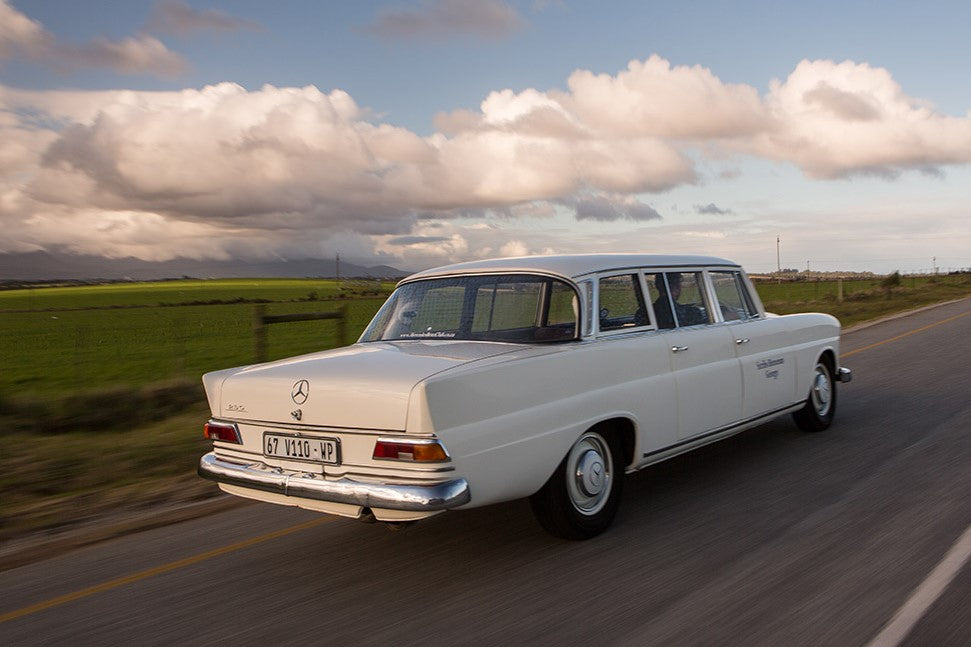One collector could not resist the urge to buy a Mercedes wreck he had spotted on eBay. Unfortunately, the car was in Germany. This unique Fintail taxi has a story to tell unlike any other.
Words: Wilhelm Lutjeharms
Photos: Charles Russell
Let’s be honest, a quick online browse looking at cars on offer can quickly turn into a 30-minute money-is-no-object game. This was not quite the case with this Fintail taxi, but the Internet is, nevertheless, where it all started.
After browsing eBay, a Fintail taxi wreck caught the attention of this collector. His collection already includes some sought after two- and four-door coupes and sedan derivatives, as well as some special estates and even a Mercedes-Benz ambulance. However, the prospect of adding a taxi to his collection tickled his fancy.
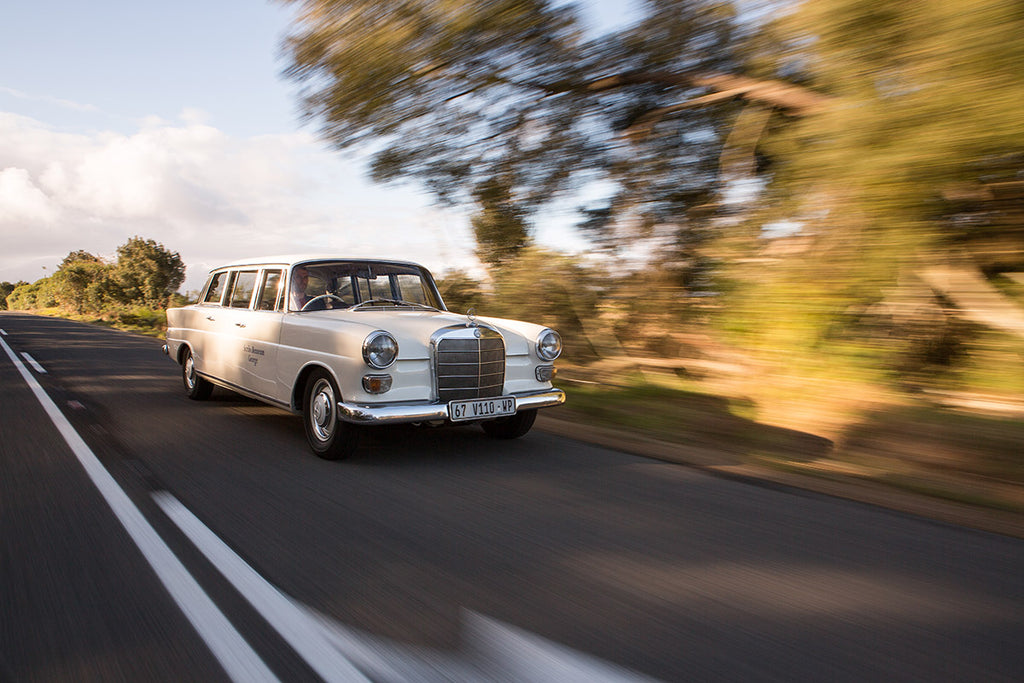
After winning the auction and making all the subsequent arrangements, the taxi was imported to South Africa in 2008. The plan to restore the car received a small setback, when the true condition of the taxi was revealed at closer inspection.
The project
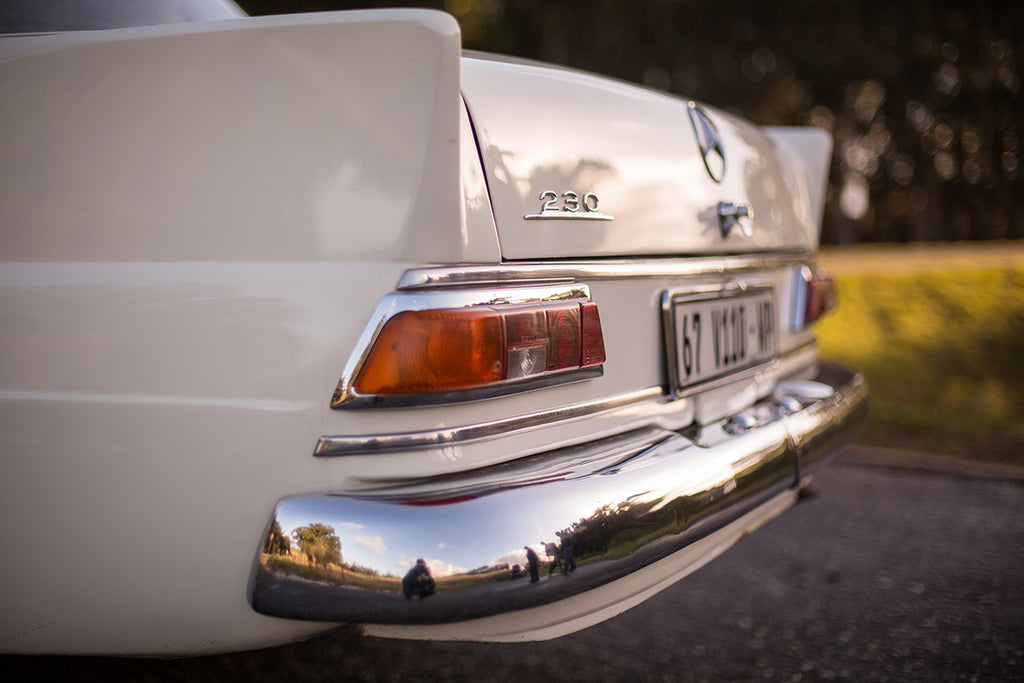
The taxi was severely rusted at the bottom of the car as well as on the front and rear sections. If this was a 300SL Roadster or Pagoda, it would have made financial sense to restore the car meticulously, but this could not be viable with a Fintail taxi. However, the owner had a W111 230 Fintail sedan in his possession. A decision was made to use this sedan as a donor car for the taxi – then the project started.
Initially, the front part of the taxi, up to the A-pillar, was cut off, as well as a huge rear section. This meant that once these parts of the 230 Fintail had been welded into place, a few significant changes had been made to the chassis. The original 200 D taxi was obviously equipped with a four-cylinder, 2.0-litre diesel engine (OM621) producing a mere 45 kW, while the 230 (M180) featured the stronger 6-cylinder, 2.3-litre petrol engine delivering precisely double that figure, 90 kW.
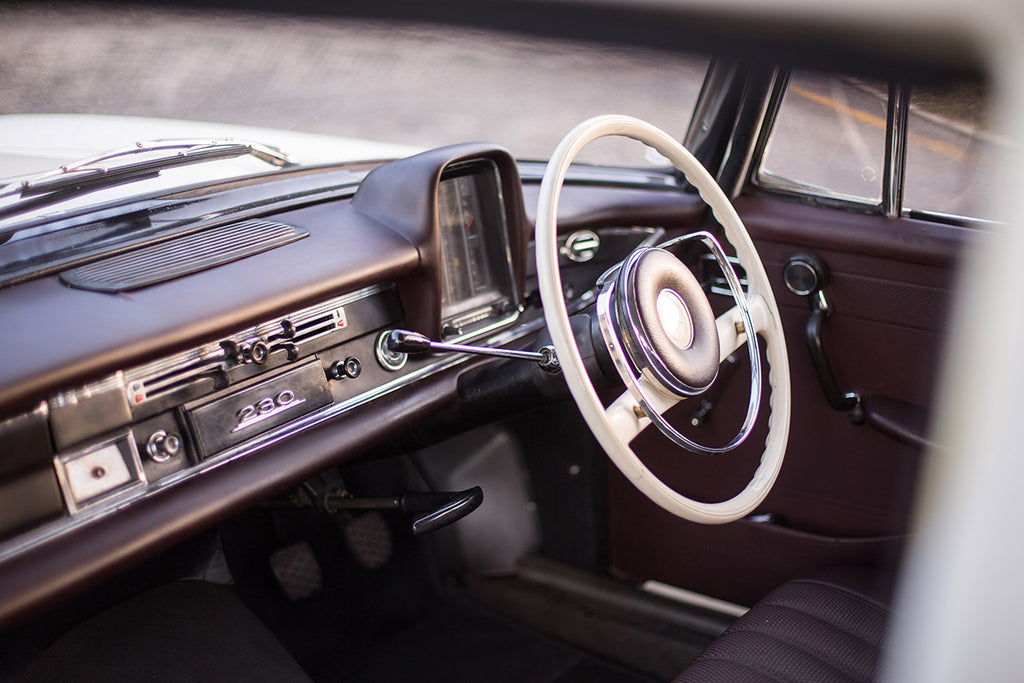
Also, the taxi was originally a left-hand drive vehicle, whilst the sedan was a right-hand drive. This swap obviously suited the owner.
As the front part of the cabin, gearbox and engine of the donor car had been used, there was less work to do in terms of sourcing, manufacturing or importing of parts. This all contributed to one of the easier restoration projects tackled by this collector.

At first sight it is not obvious that this taxi had been subjected to such an enormous welding process as it is in a relatively good condition. When I discussed the project with the owner, and page through the car’s documents, it is evident that the car has a further story to tell before it ended up abandoned in a field in Germany.
This stretched 1967 200 D was delivered to a taxi company in Innsbruck, Austria in the same year. Here we suspect it did its duty as a people transporter for several years, before someone decided to allow it to moulder away gently.
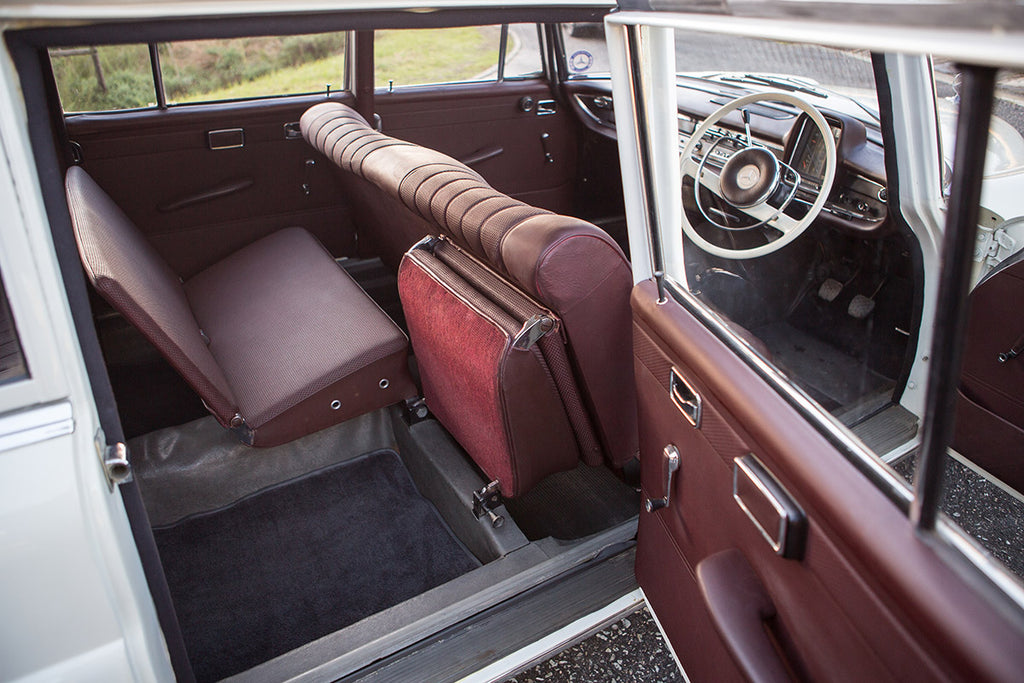
When I take a closer look at the Fintail, it actually requires a brief explanation by the owner to see the very subtle two-tone paintwork. Originally the car had been painted in a very dull grey-green colour, but this brighter combination definitely suits it better, and it is also one of this specific collector’s favourite colours.
Although the entire car appears to be white, the roof and pillars have a slight silver metallic tint, only visible from close quarters. Incidentally, the white body colour was also the donor car’s original colour.
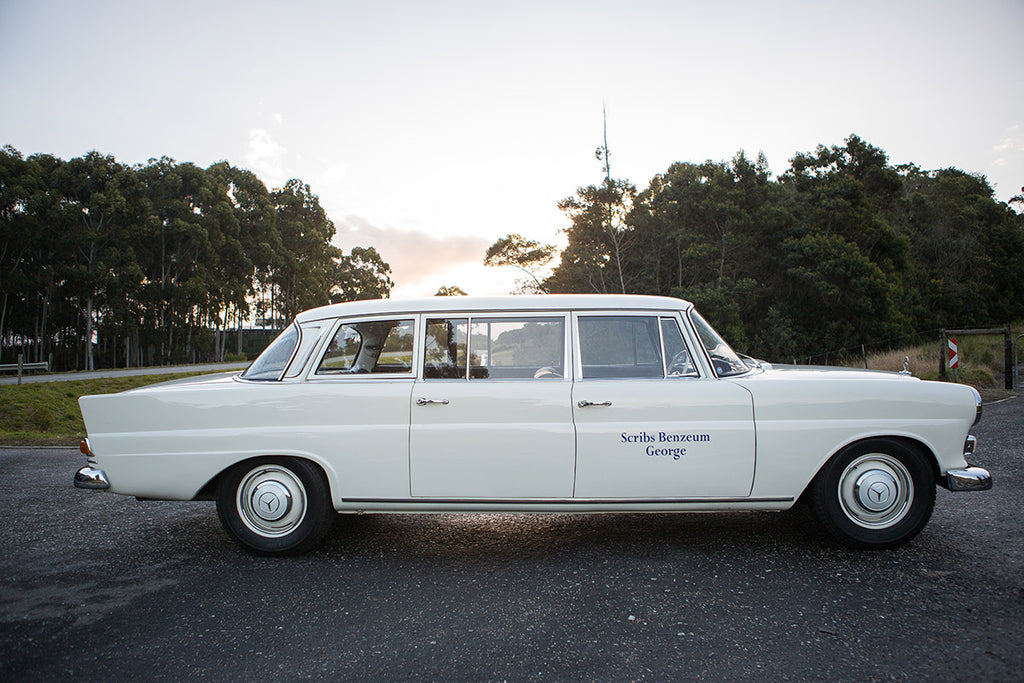
There is another mild tweak the owner added to the car, which is not standard on this model. The chrome rings on the wheels were originally from another manufacturer, but he thought it suited the car perfectly. He could have fitted a Mercedes part, which looked a lot fancier, but he decided that the car wasn’t that fancy and would seem almost “overdressed” for this workhorse.
One would think that a project like this would take several months to complete, if not closer to a year. However, it helps if you know the right people and businesses, as the entire project was completed in an impressive four months.
Behind the wheel

I open the driver’s door and take my seat behind the big steering wheel with the column shifter on the left. The steering wheel is a true reflection of the car’s near 50-year age. There are several fine cracks on the wheel, but not in such a way that you can feel it while you are driving.
The seat is comfortable, but not as soft and absorbing as the cloth or velour seats by Mercedes cars of the same era or later. This could be down to the “long-lasting seats by reinforced seat springs” as stated in Mercedes-Benz’s period brochure.

I have a decent view over the engine bonnet with a slight emphasis on the wings, as it is pronounced toward the headlights. The interior is basic, with little in terms of luxuries, but in typical Mercedes-Benz tradition every button or lever has a solid feel to it once operated.
As I pull off, it requires a few gearshifts to get used to the column shifter. First gear is towards you and up, second straight down, and in third gear you allow the spring to guide the gearlever back to the middle and then I guide it up again.
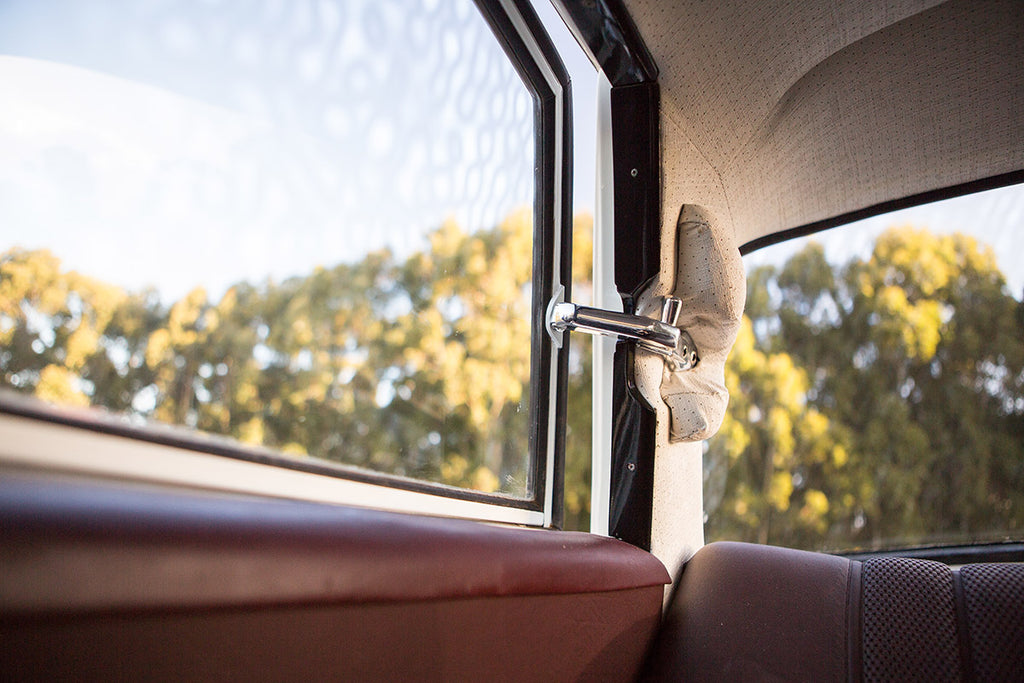
As the car’s speed increases, the vertical speedometer literally shows its true colours, with a combination of red and yellow appearing on the bar as your speed increases. I didn’t expect any level of performance, but it is hard to imagine that the original engine of the 200 D would have been even slower. Fortunately, the 230 engine responds immediately when you press the throttle. However, the immediacy of the response is first experienced through the sound of the engine, followed by a steady increase in speed. It is a very relaxed ride, and I can only imagine that with a few passengers on board you will need to be even more patient.
The longer wheelbase also contributes to a delayed response into the cabin, especially if you hit any irregularities in the road or drive over speedbumps. This is also helped by the 15-inch wheels (195/80 R15 front and rear tyres) fitted to this car.
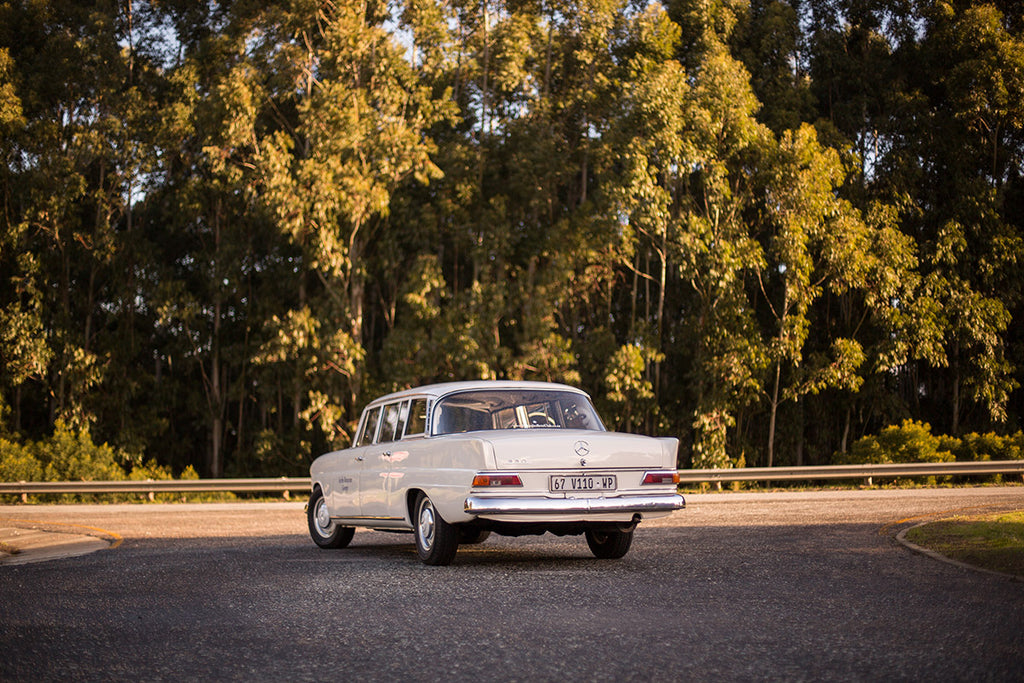
Originally, this car’s rear suspension had also been strengthened to deal with the potential of additional weight.
I open the rear door and step inside to sit down. Surprisingly there is not as much legroom as you would expect. However, when I sit up straight, my knees won’t touch the middle row of seats – and I’m a tall fellow. Interestingly, the middle row of seats, their layout and how they function, is very similar to the long-wheelbase models which was produced after this taxi. In total, this taxi is able to carry between 7 and 8 passengers.
It is especially these original MB Tex seats which show how this fabric withstood the test of time. It is clearly durable and has many years left in them – impressive if you take into account the number of passengers this car must to have carried in its lifetime.
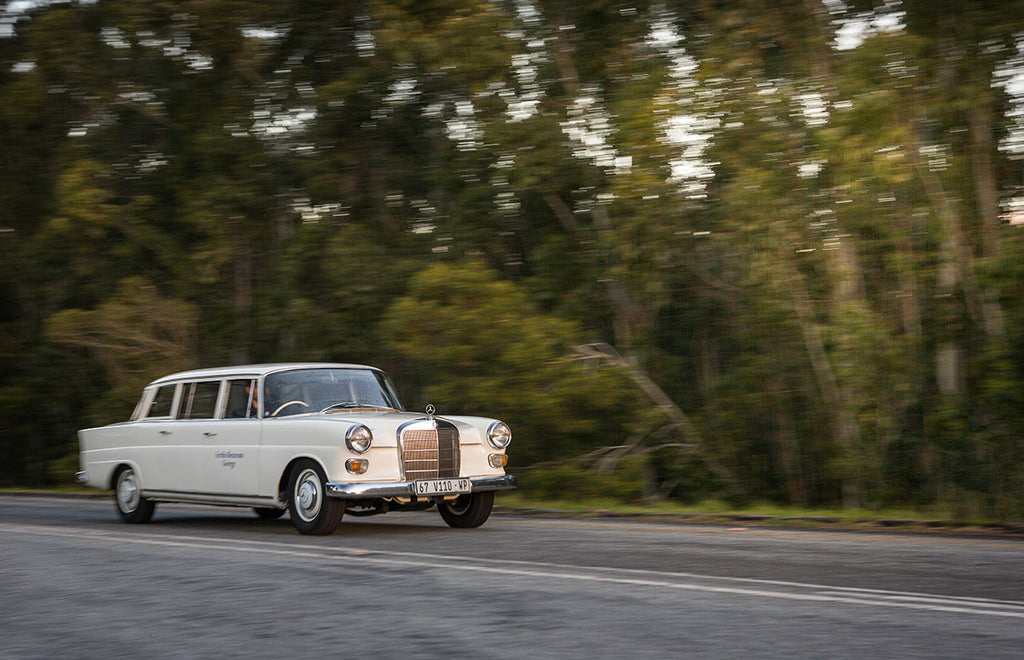
In the rear there is still the typical attention to detail you would expect from Mercedes-Benz. The small levers to open the rear windows only by an inch or two, are padded with softer materials to protect passengers against any possible head bumps.
Before I return the key to the owner, I have one more look at the Fintail. It must be a real challenge for a coachbuilder or manufacturer to add a certain amount of length to a production car’s body, and still make it look as elegant as possible and retaining the original car’s design lines. However, by only adding another row of seats, this Fintail is only 650 mm longer (5 380 mm vs. 4 730 mm) than the standard car (the exact same difference for the wheelbase), and the result it that from the exterior it doesn’t look out of proportion and in fact looks surprisingly sleek.
Specifications: (for a standard 230 sedan)
Mercedes-Benz 230 (W111)
Engine: 2.3-litre in-line six-cylinder, petrol
Power: 90 kW @ 5 400 rpm
Torque: 180 Nm @ 4 000 rpm
Transmission: 4-speed manual, RWD
Weight: 1 350 kg
0-100 km/h: 13.9 seconds
Top speed: 170 km/h
Years produced: 1965 – 1968

